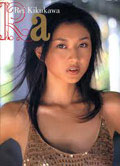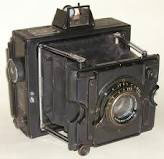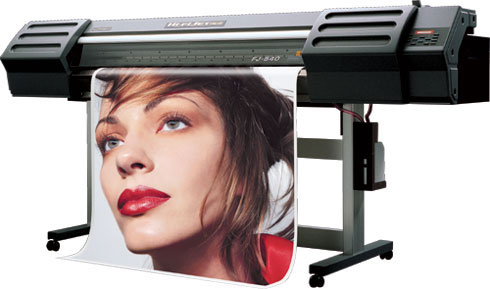写真 / 寫眞
22 June 2012
写真 (in Mandarin pronounced xiězhēn; in Japanese pronounced shashin) is one of those words that have been involved in some creative bouncing between Chinese and Japanese. Written 寫眞 in traditional characters, it is made up of two morphemes:
- 写 (trad. 寫) Mand. xiě, ’to reflect, transpose, imitate, copy’. In modern Chinese it means ‘to write’.
- 真 (trad. 眞), Mand. zhēn, literally meaning ‘true, real, correct, faithful; natural; actual’.
The term 写真 (trad. 寫眞) originally referred to ‘faithful portrayal’ (写物象之真 trad. 寫物像之眞 xiě wù xiàng zhī zhēn), whether of people or of landscapes. Traditionally it was more narrowly applied to portraiture because of the importance of fidelity in portraying people. In a much broader sense, the term can also be used for faithful descriptions of concrete and abstract objects using words.
Modern developments – the photograph
This ancient expression has developed some new meanings in the modern era. The first was its adoption by the Japanese as the term for that most modern of faithful portrayals, the photograph. Shashin (写真) is now the standard Japanese word for ‘photograph’, with little consciousness remaining of its ancient lineage.
The Chinese themselves settled on a different word for ‘photograph’: zhàopiàn (照片) or xiàngpiàn (相片). These are related to the Chinese word for ‘to photograph’, zhàoxiàng (照相), literally ‘to shine a likeness’. The second part, piàn (片), refers to something flat.
The Japanese word for ‘camera’ in the early days was the transparent shashin-ki (old 寫眞機, modern 写真機), literally a ‘photograph device’. The Chinese called the same thing a zhàoxiàng-jī (照相机, trad. 照相機) or ‘photograph device’, often shortened to xiàngjī (相机, trad. 相機).
Modern Chinese usage
Up until a certain point in time, that is how things remained. But then something happened: China opened up to the capitalistic world in the late seventies, and the way was now open for new words and usages to enter from Hong Kong, Taiwan, and Japan.

According to Baidu, one of the influences that entered China was the album of photos published as a book, known as shashin-shū (写真集) or ‘photo collection’ in Japanese. Such albums were not restricted in their subject, being applicable to photographs of natural scenery, artifacts, etc., but inevitably one aspect tended to come to the fore: collections of photos of attractive models or film stars, often in various states of undress. As is often the case, such photo collections came to be imitated in Hong Kong and Taiwan, and the Japanese term came to be narrowly applied to such collections.

Despite this lurch in direction, 写真 xiězhēn in Chinese is not necessarily disreputable in its connotations. Male stars may also be the subject of quite wholesome collections of photos. There are also plenty of young Chinese women who are happy to commission an album of professionally shot romantic (not necessarily pornographic) photos of themselves while they are still young and beautiful. See, for instance, the sign below, taken in the streets of Beijing, which advertises photography services for weddings, personal xiězhēn, and commercial photography:

Wedding photography, personal photos (xiězhēn), commercial photography
Such albums are not only for women; they are also favourites for men and, especially, babies and children. The term xiězhēn may thus be narrowly used for this kind of photo album, as opposed to an ordinary photo, which is known as zhàopiàn or xiàngpiàn.
Modern technical term
A further meaning has become attached to the term xiězhēn in the last decade or two. Professional establishments that print out relatively large colour images for use in advertising, signage, etc. generally call this xiězhēn. It is reasonable to assume that this terminology also derived, directly or indirectly, from the Japanese word for ‘photo’, but the path is less clear than that of xiězhēn-jí (photo collection).
Such services typically use specialised colour printers, known in Chinese as xiězhēn-jī (写真机 trad. 寫真機), literally ‘xiezhen machine’ (Baidu entry here). The main types are bubblejet printers (热发泡写真机 trad. 熱發泡寫眞機 rèfāpāo xiězhén-jī) and piezoelectric photo machines (压电写真机 trad. 壓電寫眞機 yādiàn xiězhēn-jí).
There is also a distinction between xiězhēn-jī (写真机) and pēnhuì-jī (喷绘机 trad. 噴繪機 inkjet printers), each having different characteristics and applications. The inkjet printer is used for larger formats and outdoor locations, is based on the use of solvent-based ink, and uses lower resolutions; piezoelectric types are used for smaller, indoor, high-resolution photos and use water-based inks.
The modern technical use of the Chinese term is in stark contrast with the Japanese term shashin-ki (写真機), which is a very old-fashioned word for a camera. The modern name for a camera in Japanese is kamera (カメラ).
A Google image search thus reveals the very different images conjured up by these terms. When Japanese think of a shashin-ki, they think of this:

When Chinese think of a xiězhēnjī, they think of this.

Carl said on 22 June 2012 (11:33 pm):
In contemporary Japanese ads, you often see the absurd disclaimer, “画像はイメージです” Gazô wa imeeji desu “This image is an image.”
Of course, the issue is that the word “imeeji” means something different than “image” does in English. Imeeji is more like “an idealized image” or “an art’s impression.” It’s funny to see how the same words can take on subtly different meanings in different languages, but sacre bleu, ç’est la vie.
Sorry, I'm now using Disqus for comments. If you'd prefer not to use Disqus, please send me an email and I'll list your comments separately. Thanks!